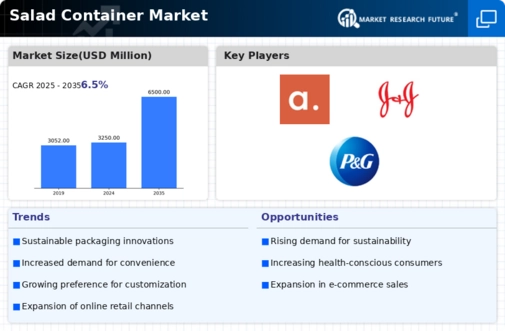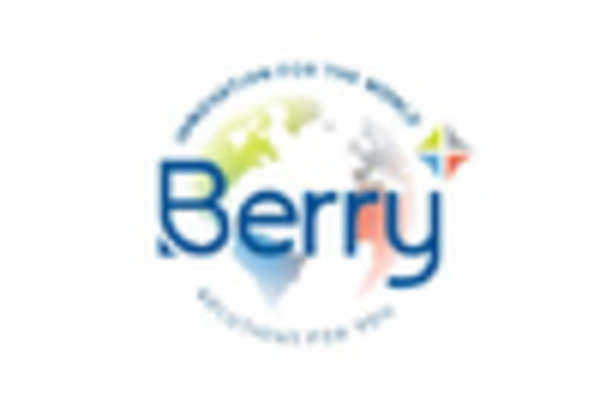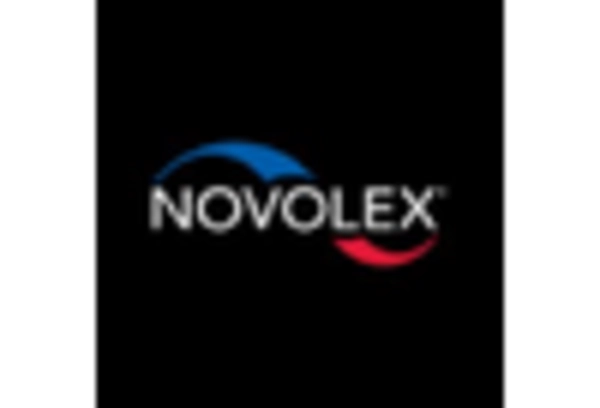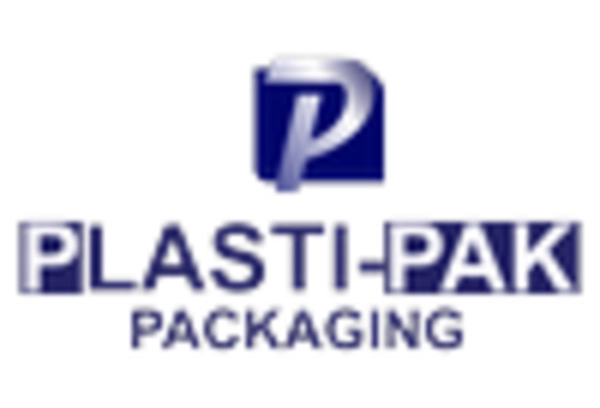The Salad Container Market is currently characterized by a dynamic competitive landscape, driven by increasing consumer demand for fresh and convenient food options. Key players are actively engaging in strategies that emphasize sustainability, innovation, and regional expansion. For instance, Plastipak Packaging (US) has positioned itself as a leader in sustainable packaging solutions, focusing on the development of recyclable and biodegradable materials. Similarly, Berry Global (US) has been enhancing its product portfolio through strategic acquisitions and partnerships, thereby strengthening its market presence. These strategies collectively contribute to a moderately fragmented market structure, where competition is intensifying as companies seek to differentiate themselves through innovative offerings and operational efficiencies.
In terms of business tactics, companies are increasingly localizing manufacturing to reduce lead times and enhance supply chain resilience. This approach not only optimizes logistics but also aligns with growing consumer preferences for locally sourced products. The Salad Container Market appears to be moderately fragmented, with several key players exerting influence over market dynamics. The collective actions of these companies indicate a trend towards consolidation, as they seek to leverage economies of scale and enhance their competitive positioning.
In August 2025, Amcor (AU) announced the launch of a new line of eco-friendly salad containers made from 100% recycled materials. This strategic move underscores Amcor's commitment to sustainability and positions the company favorably in a market increasingly driven by environmental considerations. The introduction of these containers is likely to resonate with environmentally conscious consumers, potentially enhancing brand loyalty and market share.
In September 2025, Sealed Air (US) unveiled an innovative packaging solution that incorporates smart technology to monitor freshness in salad containers. This development not only enhances product quality but also aligns with the growing trend of digitalization in the food packaging sector. By integrating technology into their offerings, Sealed Air is likely to differentiate itself from competitors, appealing to both retailers and consumers who prioritize freshness and quality.
In July 2025, Huhtamaki (FI) expanded its production capabilities in North America by investing in a new manufacturing facility dedicated to salad containers. This strategic expansion is indicative of Huhtamaki's focus on meeting the rising demand for convenient food packaging solutions in the region. By increasing its production capacity, the company is well-positioned to capture a larger market share and respond effectively to evolving consumer preferences.
As of October 2025, the Salad Container Market is witnessing significant trends such as digitalization, sustainability, and the integration of artificial intelligence in packaging solutions. Strategic alliances among key players are shaping the competitive landscape, fostering innovation and enhancing supply chain efficiencies. Looking ahead, it is anticipated that competitive differentiation will increasingly pivot from price-based strategies to a focus on innovation, technology integration, and supply chain reliability, as companies strive to meet the evolving demands of consumers.


















Leave a Comment